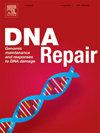Weaponizing CRISPR/Cas9 for selective elimination of cells with an aberrant genome
IF 2.7
3区 生物学
Q2 GENETICS & HEREDITY
引用次数: 0
Abstract
The CRISPR/Cas9 technology is a powerful and versatile tool to disrupt genes’ functions by introducing sequence-specific DNA double-strand breaks (DSBs). Here, we repurpose this technology to eradicate aberrant cells by specifically targeting silent and non-functional genomic sequences present only in target cells to be eliminated. Indeed, an intrinsic challenge of most current therapies against cancer and viral infections is the non-specific toxicity that they can induce in normal tissues because of their impact on important cellular mechanisms shared, to different extents, between unhealthy and healthy cells. The CRISPR/Cas9 technology has potential to overcome this limitation; however, so far effectiveness of these approaches was made dependent on the targeting and inactivation of a functional gene product. Here, we generate proof-of-principle evidence by engineering HeLa and RKO cells with a promoterless Green Fluorescent Protein (GFP) construct. The integration of this construct simulates either a genomic alteration, as in cancer cells, or a silent proviral genome. Cas9-mediated DSBs in the GFP sequence activate the DNA damage response (DDR), reduce cell viability and increase mortality. This is associated with increased cell size, multinucleation, cGAS-positive micronuclei accumulation and the activation of an inflammatory response. Pharmacological inhibition of the DNA repair factor DNA-PK enhances cell death. These results demonstrate the therapeutic potential of the CRISPR/Cas9 system in eliminating cells with an aberrant genome, regardless of the expression or the function of the target DNA sequence.
武器化CRISPR/Cas9选择性消除具有异常基因组的细胞
CRISPR/Cas9技术是一种强大而通用的工具,通过引入序列特异性DNA双链断裂(dsb)来破坏基因功能。在这里,我们重新利用这项技术,通过特异性靶向仅存在于要消除的靶细胞中的沉默和非功能基因组序列来根除异常细胞。事实上,目前大多数针对癌症和病毒感染的治疗方法的一个内在挑战是,它们可能在正常组织中诱导非特异性毒性,因为它们在不同程度上影响了不健康细胞和健康细胞之间共享的重要细胞机制。CRISPR/Cas9技术有潜力克服这一限制;然而,到目前为止,这些方法的有效性依赖于功能性基因产物的靶向和失活。在这里,我们通过用无启动子的绿色荧光蛋白(GFP)构建HeLa和RKO细胞来获得原理证明。这种结构的整合要么模拟了基因组的改变,如癌细胞,要么模拟了沉默的前病毒基因组。GFP序列中cas9介导的dsb激活DNA损伤反应(DDR),降低细胞活力,增加死亡率。这与细胞大小增加、多核、cgas阳性微核积累和炎症反应的激活有关。DNA修复因子DNA- pk的药理抑制促进细胞死亡。这些结果证明了CRISPR/Cas9系统在消除具有异常基因组的细胞方面的治疗潜力,而不管目标DNA序列的表达或功能如何。
本文章由计算机程序翻译,如有差异,请以英文原文为准。
求助全文
约1分钟内获得全文
求助全文
来源期刊

DNA Repair
生物-毒理学
CiteScore
7.60
自引率
5.30%
发文量
91
审稿时长
59 days
期刊介绍:
DNA Repair provides a forum for the comprehensive coverage of DNA repair and cellular responses to DNA damage. The journal publishes original observations on genetic, cellular, biochemical, structural and molecular aspects of DNA repair, mutagenesis, cell cycle regulation, apoptosis and other biological responses in cells exposed to genomic insult, as well as their relationship to human disease.
DNA Repair publishes full-length research articles, brief reports on research, and reviews. The journal welcomes articles describing databases, methods and new technologies supporting research on DNA repair and responses to DNA damage. Letters to the Editor, hot topics and classics in DNA repair, historical reflections, book reviews and meeting reports also will be considered for publication.
 求助内容:
求助内容: 应助结果提醒方式:
应助结果提醒方式:


